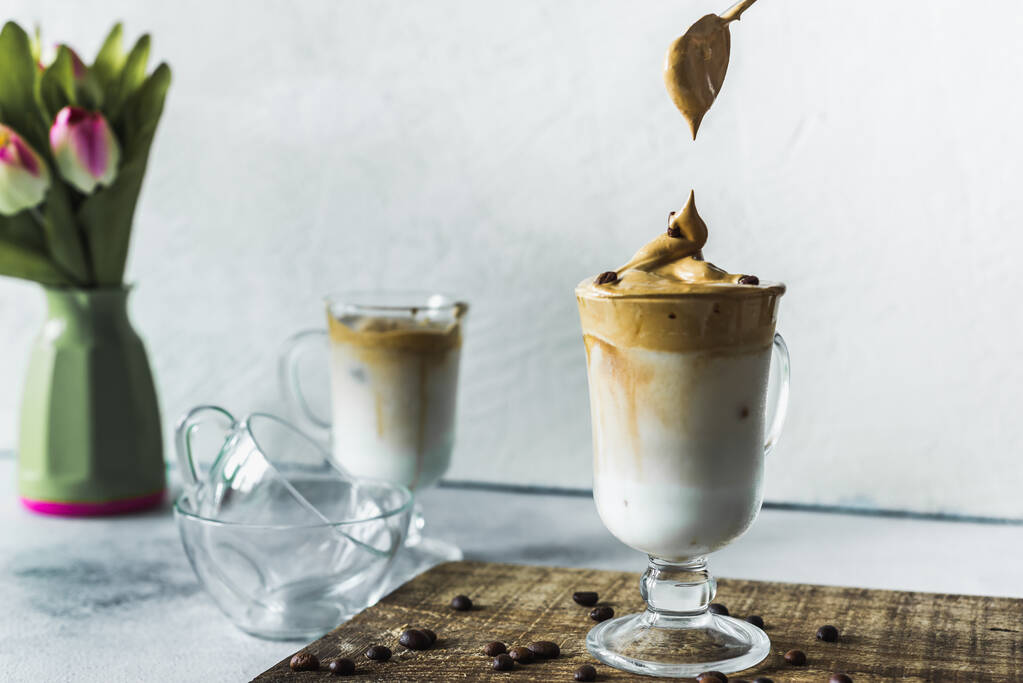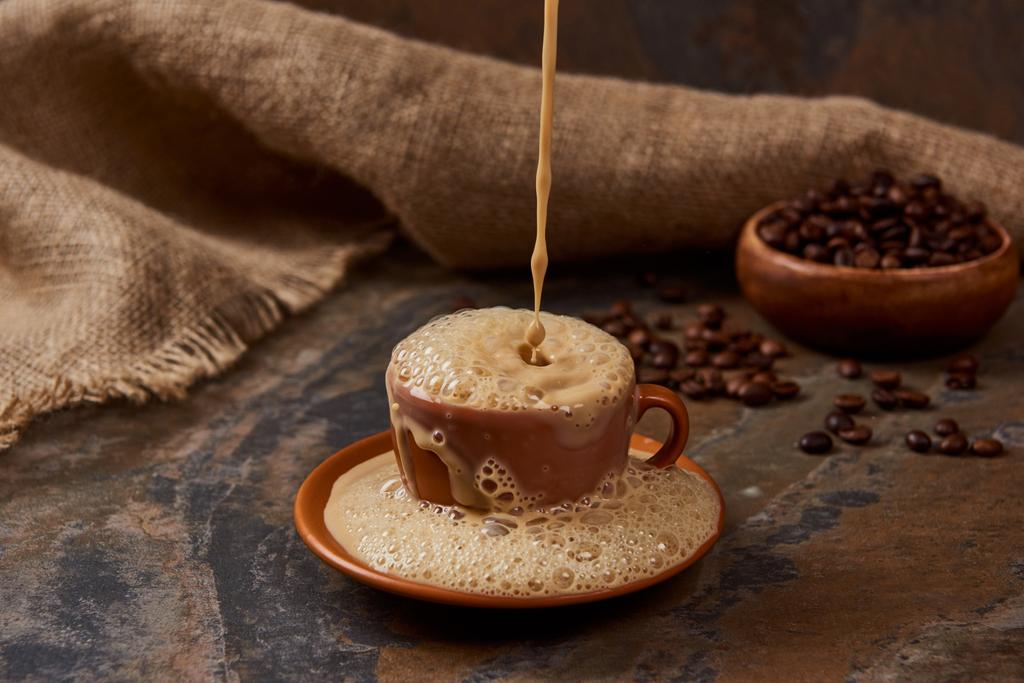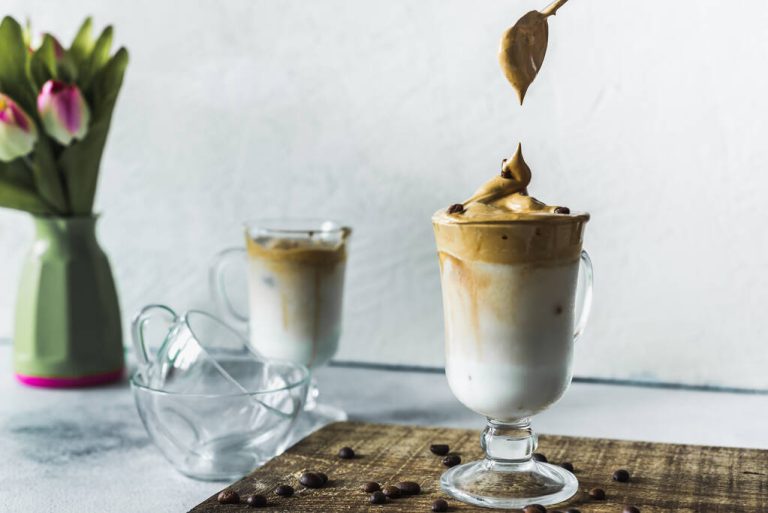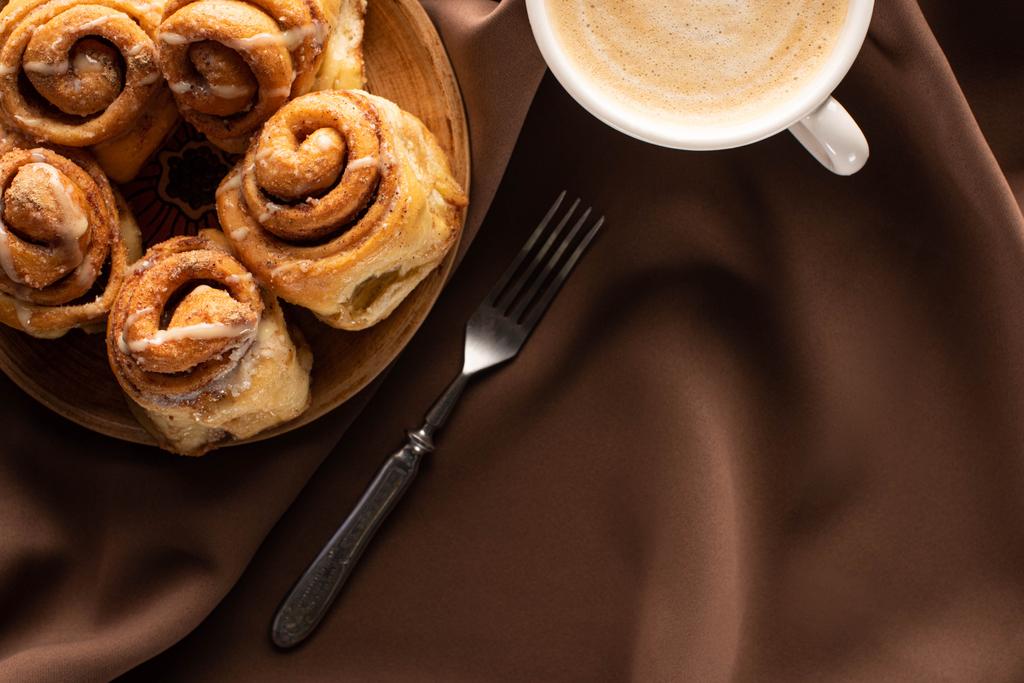A well-done coffee crema can be found on a correctly prepared, fresh espresso and makes you look forward to the perfect coffee just by looking at it. It stands for the quality of the coffee and the skillful preparation in equal measure.
With a good espresso, the crema settles by itself, so it is not poured onto the coffee. Ideally, it is light brown, thick and a few millimeters high. It is created by the oil in the coffee bean, which rises to the top after preparation. In addition to the coffee beans, carbon dioxide, proteins and sugar bind to form a velvety, fine consistency.
Connoisseurs swear by a good crema that it holds a teaspoon of sugar for about 3 seconds before the sugar settles to the bottom. The crema should then close completely on the surface. The settling of the coffee crema on the surface is particularly visible when the espresso is served in a glass. Then you can see how fine bubbles form, which collect on the surface to form a golden-brown layer. The finer the bubbles settle, the higher the quality of the crema. In the best case, a kind of hood forms on the espresso in which you can hardly see the individual bubbles.
The bean used for the espresso is decisive for the consistency of the coffee crema. With an Arabica bean, the crema becomes finer and lighter, it is velvety. With espresso made from Robusta beans, or with a proportion of Robusta beans, the crema becomes thicker and firmer, so it stays on the surface longer.
Different ways of preparing the coffee crema
There is no crema on a normal filter coffee, as this is only created by pressure during preparation. The higher the pressure, the better the coffee crema. With a classic espresso maker, this is not ideal because the water pressure is not high enough. That’s why espresso makers are now available with a special crema valve that ensures perfect coffee enjoyment all round. In fully automatic coffee machines that are filled with whole beans, or with pad and capsule machines, you can prepare a good coffee crema at the touch of a button. With high-quality portafilter machines, very high pressure of nine to ten bar is generated and the crema is correspondingly good with this professional method of preparation, in which the coffee only dribbles slightly at first and then flows into the cup with an even stream. This guarantees the perfect crema.
The characteristics of a perfect coffee crema
The crema is a quality criterion for the coffee and connoisseurs can tell whether the coffee is fresh or the beans are a bit older by its colour, consistency, dwell time on the coffee and the quantity. The fresher the coffee, the better the coffee crema. And the color also provides information: If the crema is very dark, then the water was too hot during the brewing process or the beans were ground too finely. On the other hand, if the color is too light, then the beans were prepared too quickly and with too cold water, or the beans were too old and ground too coarsely. If the coffee crema dissolves quickly, then too little pressure was brewed – however, the espresso cup may also have been too hot or too cold. In general, the ground coffee should be fresh, the amount must be right and it should be brewed with a water temperature of 90 to 95° C and a pressure of nine to ten bar – then nothing can go wrong. In terms of color, the ideal crema should have a beautiful golden-brown tone.
With fully automatic coffee machines, pad and capsule machines, the crema is created by additional valves that froth the coffee. A good crema completes the pleasurable experience when drinking an espresso, because it ensures a harmonious and velvety overall impression.






